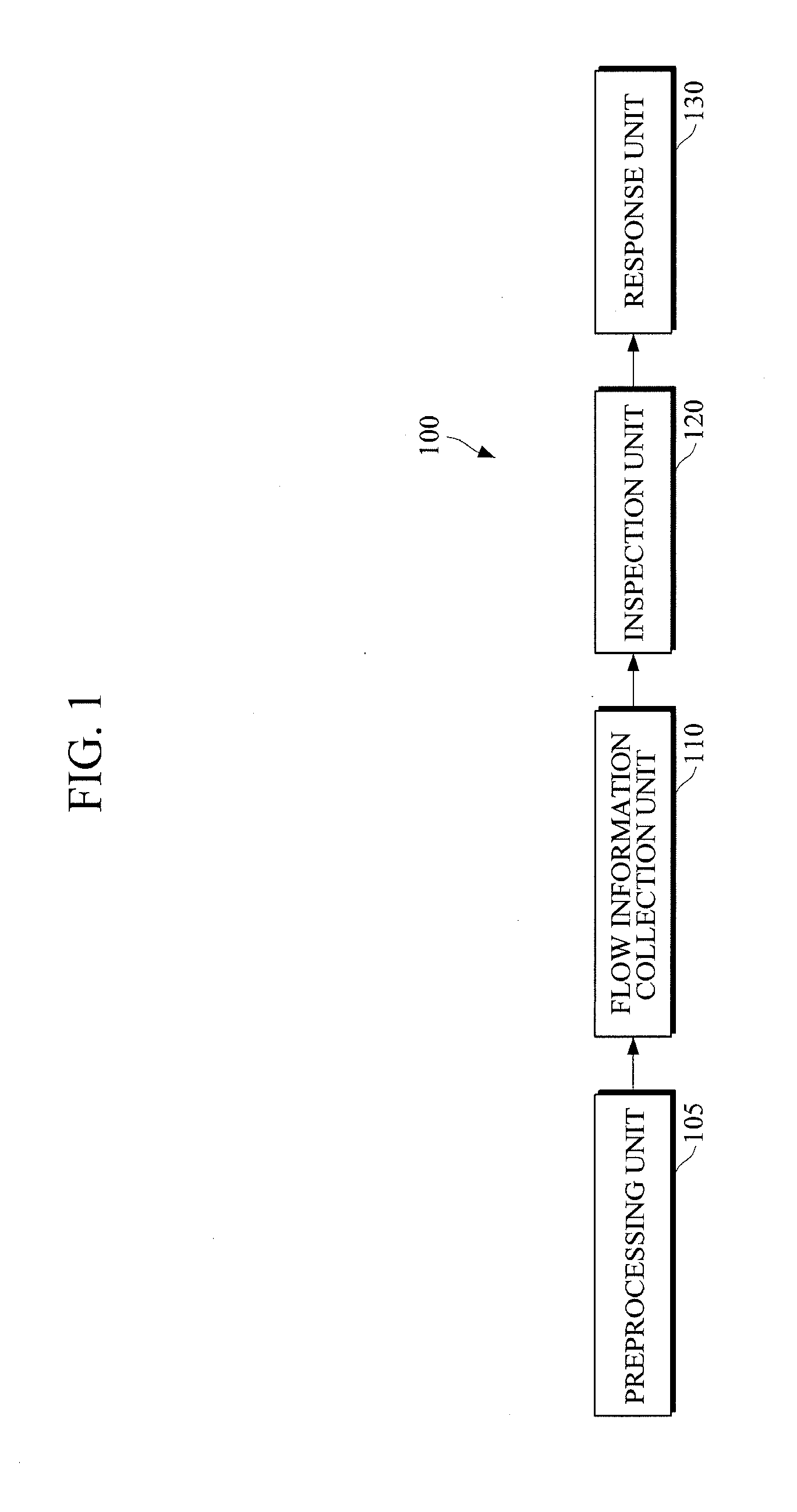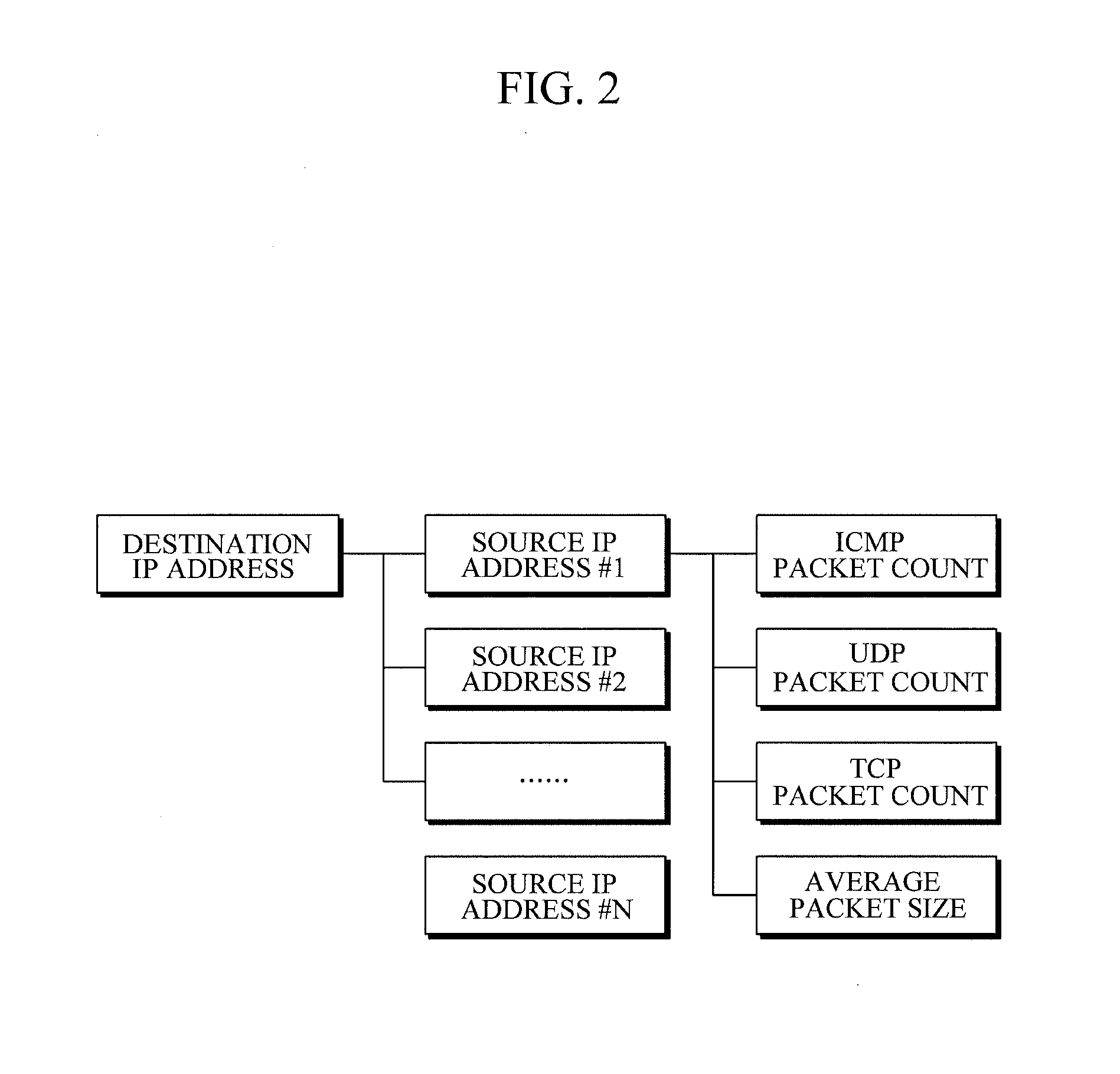Ddos attack detection and defense apparatus and method
- Summary
- Abstract
- Description
- Claims
- Application Information
AI Technical Summary
Benefits of technology
Problems solved by technology
Method used
Image
Examples
Embodiment Construction
[0016]The following description is provided to assist the reader in gaining a comprehensive understanding of the methods, apparatuses, and / or systems described herein. Accordingly, various changes, modifications, and equivalents of the methods, apparatuses, and / or systems described herein may be suggested to those of ordinary skill in the art. Also, descriptions of well-known functions and constructions may be omitted for increased clarity and conciseness.
[0017]FIG. 1 illustrates an example of a Distributed Denial of Service (DDoS) attack detection and defense apparatus.
[0018]Referring to FIG. 1, DDoS attack detection and defense apparatus 100 includes a preprocessing unit 105, a flow information collection unit 110, an inspection unit 120, and a response unit 130. For example, the DDoS attack detection and defense apparatus 100 may include a router or a network switch equipped with a DDoS attack detection function.
[0019]The preprocessing unit 105 may be connected to an ingress port...
PUM
 Login to View More
Login to View More Abstract
Description
Claims
Application Information
 Login to View More
Login to View More - R&D
- Intellectual Property
- Life Sciences
- Materials
- Tech Scout
- Unparalleled Data Quality
- Higher Quality Content
- 60% Fewer Hallucinations
Browse by: Latest US Patents, China's latest patents, Technical Efficacy Thesaurus, Application Domain, Technology Topic, Popular Technical Reports.
© 2025 PatSnap. All rights reserved.Legal|Privacy policy|Modern Slavery Act Transparency Statement|Sitemap|About US| Contact US: help@patsnap.com



